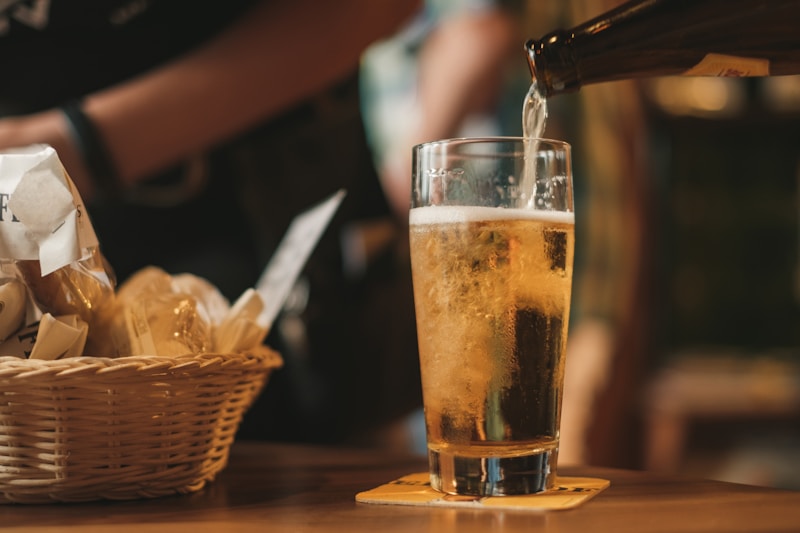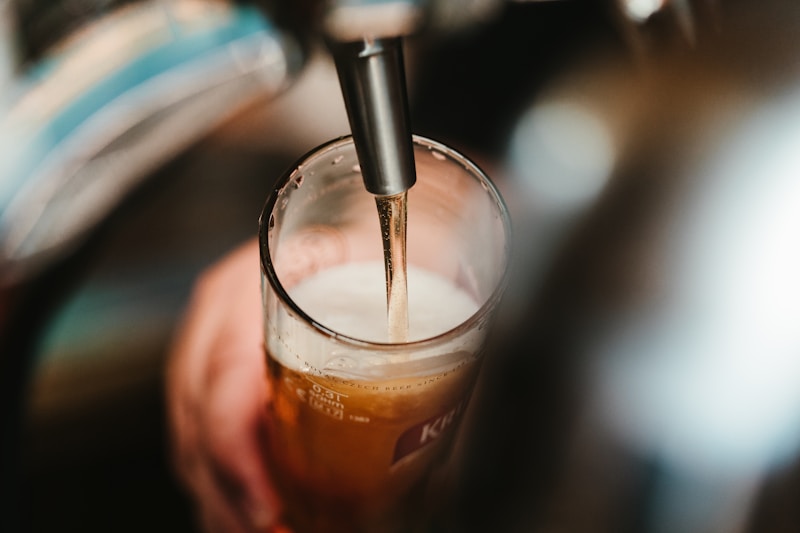We put hard seltzers and light beers head to head across every metric that matters: calories, carbs, sugar, alcohol content, taste, value, and overall health impact. By the end of this comprehensive comparison, you will know exactly which category deserves space in your fridge.
The Numbers: A Direct Comparison

Let us start with the cold, hard numbers. Here is how the most popular options in each category compare:
Hard Seltzer Leaders
| Brand | Calories | Carbs | Sugar | ABV |
|---|---|---|---|---|
| White Claw | 100 | 2g | 2g | 5% |
| Truly | 100 | 1g | 1g | 5% |
| Bon and Viv | 90 | 0g | 0g | 4.5% |
| Vizzy | 100 | 2g | 1g | 5% |
| High Noon | 100 | 2.6g | 2.6g | 4.5% |
Light Beer Leaders
| Brand | Calories | Carbs | Sugar | ABV |
|---|---|---|---|---|
| Michelob Ultra | 95 | 2.6g | 0g | 4.2% |
| Miller Lite | 96 | 3.2g | 0g | 4.2% |
| Bud Light | 110 | 6.6g | 0g | 4.2% |
| Coors Light | 102 | 5g | 0g | 4.2% |
| Corona Light | 99 | 4.8g | 0g | 4.1% |
Category Averages
| Metric | Hard Seltzer | Light Beer | Winner |
|---|---|---|---|
| Avg Calories | 98 | 100 | Tie |
| Avg Carbs | 1.5g | 4.4g | Hard Seltzer |
| Avg Sugar | 1.3g | 0g | Light Beer |
| Avg ABV | 4.8% | 4.2% | Hard Seltzer |
Breaking Down Each Metric
Calories: Essentially a Tie
The calorie difference between hard seltzers and light beers is negligible, averaging just 2 to 3 calories per serving. Both categories cluster around 95 to 105 calories for a 12 ounce serving. If calories are your only concern, neither category has a meaningful advantage.
The real calorie differences exist within categories rather than between them. Bon and Viv at 90 calories beats everything, while Bud Light at 110 calories is the worst performer among mainstream options.
Carbohydrates: Clear Seltzer Advantage
This is where hard seltzers pull ahead significantly. The average hard seltzer contains 1 to 2 grams of carbs, while light beers average 4 to 5 grams. Some seltzers like Bon and Viv have zero carbs, while most light beers have at least 3 grams.
For keto dieters, this difference is meaningful. On a 20 gram daily limit, five light beers would consume your entire carb budget, while you could have ten hard seltzers with room to spare.
Sugar: Light Beer Actually Wins
Here is a surprising finding: light beers typically contain zero sugar, while hard seltzers often have 1 to 2 grams. The carbohydrates in beer come from residual starches and complex carbs from the brewing process, not simple sugars. Hard seltzers get their carbs primarily from added sugar for flavor.
For people specifically avoiding sugar (rather than all carbs), light beer is technically the better choice. However, the amount of sugar in hard seltzers is minimal and unlikely to cause significant glycemic impact.
Alcohol Content: Slight Seltzer Edge
Hard seltzers average about 5% ABV compared to 4.2% for most light beers. This means seltzers deliver more alcohol per calorie, making them slightly more efficient from a purely mathematical standpoint.
The difference is modest but real: to get the same alcohol from light beer as from two hard seltzers, you would need approximately 2.4 light beers, adding extra calories and carbs.
Beyond Nutrition: Other Factors to Consider

Taste Profile
Hard Seltzers: Light, refreshing, fruit-forward flavors. Best described as lightly alcoholic sparkling water with subtle fruit notes. Very easy to drink but lacks depth. Some people find them too light or one-dimensional.
Light Beer: Traditional beer taste, just thinner and less flavorful than regular beer. Malty notes, slight bitterness, familiar drinking experience. Some people find light beers watery compared to craft options.
Taste preference is highly individual. If you like the crisp, clean taste of sparkling water, seltzers will appeal. If you want something that actually tastes like beer, light beer is the obvious choice.
Variety and Flavors
Hard Seltzers: Dozens of fruit flavors across multiple brands. Mango, black cherry, lime, grapefruit, watermelon, and more. New flavors launch constantly. This variety is a major selling point for the category.
Light Beer: Essentially one flavor profile with minor variations between brands. What you see is what you get. The lack of variety can be either comforting or boring depending on your perspective.
Social Acceptance
Both categories are now fully mainstream. The days when ordering a hard seltzer might draw looks are long gone. Similarly, light beer lost any stigma decades ago. Order whichever you prefer without social concern.
Availability
Light beer remains more universally available, particularly at sports venues, dive bars, and events. Hard seltzers have excellent distribution at stores and most restaurants but may not be available at every single drinking establishment.
Price
Prices are comparable. A 12 pack of either category typically runs $15 to $20 at most retailers. Neither has a significant price advantage, though sales and regional variations exist.
Specific Use Cases: Which Wins?
For Strict Keto: Hard Seltzer
The carb advantage makes seltzers the clear winner for keto dieters. Look for Truly (1g carb) or Bon and Viv (0g carb) specifically. The extra grams in light beer add up quickly on a 20g limit.
For General Weight Loss: Tie
The calorie difference is too small to matter. Choose based on taste preference and which one helps you drink less overall. For some people, beer’s fuller body is more satisfying and leads to slower consumption.
For Summer Refreshment: Hard Seltzer
The light, crisp, fruity nature of seltzers makes them perfect for hot weather. They are like alcoholic sparkling water, which is exactly what many people want poolside or at a barbecue.
For Watching Sports: Light Beer
Beer and sports go together culturally. Light beer offers that traditional experience with acceptable nutrition. Plus, it is more likely to be available at stadiums and sports bars.
For Pairing with Food: Light Beer
Beer pairs better with food than hard seltzer. The malty notes complement pizza, burgers, wings, and other classic drinking foods. Hard seltzer’s flavor profile does not enhance food the same way.
For All Day Drinking: Hard Seltzer
At beach trips, pool parties, or day long events, the lighter body and variety of flavors make seltzers easier to drink over extended periods without palate fatigue.
The Hybrid Option: Light Beer Seltzers
Some brands now offer hybrid products that blur the line between categories:
- Bud Light Seltzer: Made by a beer company but structured like a seltzer (100 cal, 2g carbs)
- Corona Hard Seltzer: Similar hybrid approach
- Natural Light Seltzer: Budget hybrid option
These products typically have nutrition profiles similar to standalone seltzers but with brand names more associated with beer culture.
Our Verdict
There is no universal winner in the hard seltzer versus light beer debate. The best choice depends on your specific goals and preferences:
Choose Hard Seltzer if:
- You are strictly counting carbs or following keto
- You prefer light, fruity, refreshing drinks
- You want variety in flavors
- You are drinking during summer activities
- You do not particularly enjoy beer taste
Choose Light Beer if:
- You actually like beer and want that taste
- You are watching calories more than carbs specifically
- You want to avoid added sugars
- You are pairing drinks with food
- You are in a setting where beer is the cultural norm
The DrinkLeader Recommendation
Stock both categories. Have Michelob Ultra or Miller Lite for when you want beer. Have Truly or White Claw for when you want something lighter and fruitier. Matching your drink to your mood and context leads to better enjoyment and often less overconsumption.
Both hard seltzers and light beers are excellent choices for health conscious drinkers. The differences between them are far smaller than the difference between either category and regular beer, cocktails, or other high calorie options. You are making a smart choice with either one.
Use our DrinkLeader database to compare specific products and find the best options in each category for your needs.
Nutritional data sourced from manufacturer information and verified through independent analysis. Individual products may vary.
]]>